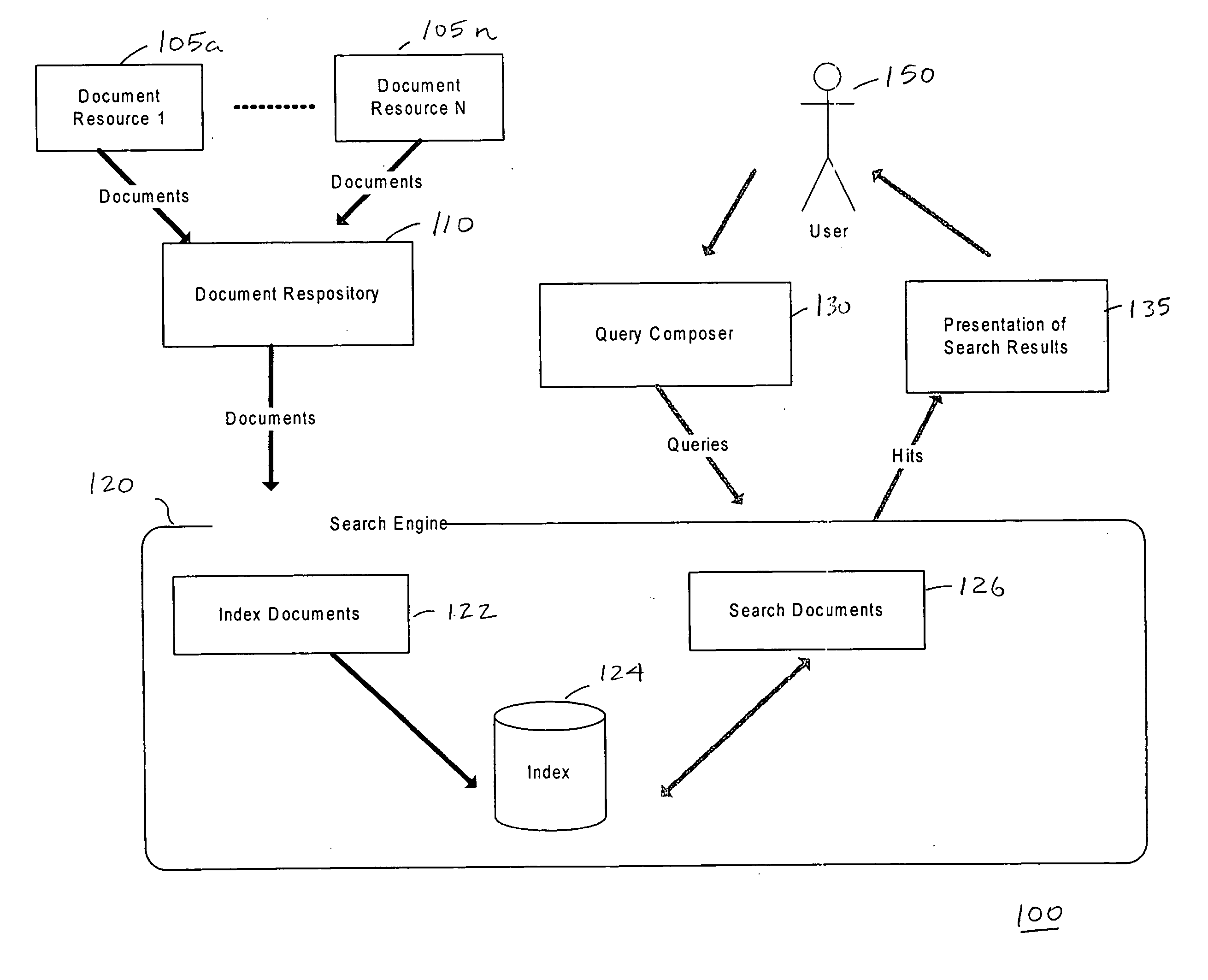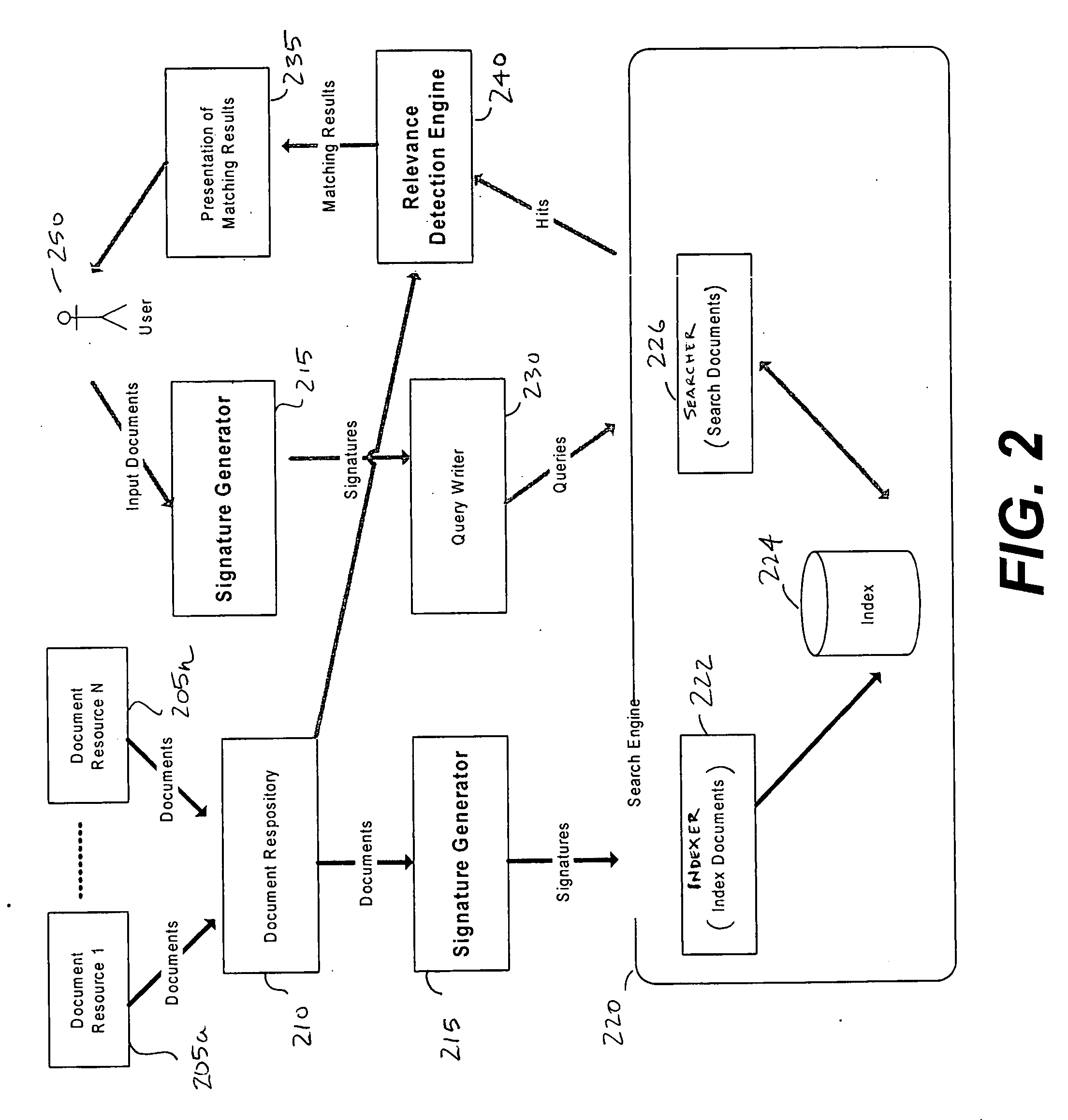Matching engine for querying relevant documents
a matching engine and document technology, applied in the field of search engine technologies, can solve the problems of insufficient search engine technology to search relevant documents for many, lack of accurate and efficient measurement of document relevance, and large list of conventional systems returning documents, etc., to achieve the effect of increasing search engine utilization and increasing acceptan
- Summary
- Abstract
- Description
- Claims
- Application Information
AI Technical Summary
Benefits of technology
Problems solved by technology
Method used
Image
Examples
first embodiment
[0037]FIG. 3 illustrates a signature generation process in accordance with the present invention. This embodiment illustrates generating signatures from an English document encoded in ASCII codes. The process begins with inputting 305 the document. The process parses 310 the document to generate (or create) an initial list of one or more tokens (a token list). In one embodiment, a token includes text in the document separated by a predefined character characteristic. Examples of predefined character characteristics include a delimiter. Once tokens are separated, functions such as stemming, stop-work or lower case analysis can be applied.
[0038] The process continues with lower casing 315 each token of the token list. Lower casing 315 is a function that converts each letter of a token to a lower case character. The process also stems 320 each token of the token list. It is noted that word stemming is a process to identify or extract core roots from a word. Continuing, the process appl...
second embodiment
[0066] Referring now to FIG. 6, it illustrates a relevance detection process in accordance with the present invention. The process begins with an input 605 of an initial text document, referenced as doc, and a list of text documents to be matched to the doc, plus an integer M. The list of text documents is referenced as doc1, . . . , docm. where m is the number of text documents and M is a minimum substring match length. It is noted that M can be any integer and may be predefined within the system or may be selected as an input into the system as previously described.
[0067] The process normalizes 610 doc, doc1, . . . , docm to generate (or produce) strings str, str1, . . . , strm. Next, the process assigns 615 a prime number, Q, which is larger than the size of string str and is referenced as L. By way of example, assume for purposes of describing this embodiment that Q=3*L / 2. The process allocates an array H with size Q for a hash table with chaining capability to resolve collision...
PUM
 Login to View More
Login to View More Abstract
Description
Claims
Application Information
 Login to View More
Login to View More - R&D
- Intellectual Property
- Life Sciences
- Materials
- Tech Scout
- Unparalleled Data Quality
- Higher Quality Content
- 60% Fewer Hallucinations
Browse by: Latest US Patents, China's latest patents, Technical Efficacy Thesaurus, Application Domain, Technology Topic, Popular Technical Reports.
© 2025 PatSnap. All rights reserved.Legal|Privacy policy|Modern Slavery Act Transparency Statement|Sitemap|About US| Contact US: help@patsnap.com



